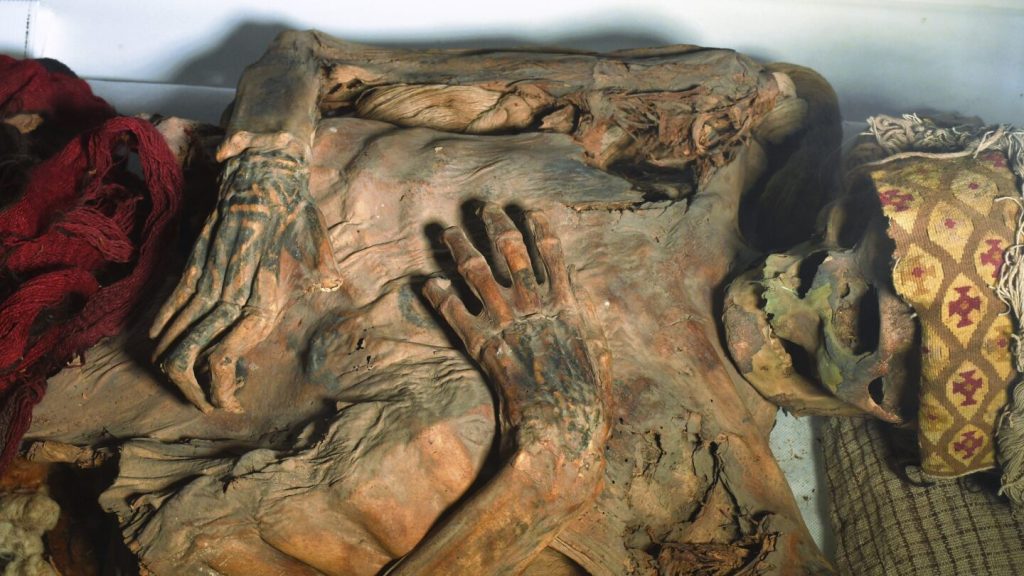Unveiling the Intricate Artistry of Ancient Tattoos: A Laser-Based Investigation of Peruvian Mummies
The human fascination with body art dates back millennia, with evidence of tattooing stretching over 5,000 years. Recent research has employed cutting-edge laser technology to reveal the stunning complexity of tattoos adorning mummies from the ancient Chancay culture of coastal Peru. These intricate designs, dating back to around 1250 A.D., showcase a remarkable level of artistic skill and provide a unique window into the cultural practices of this pre-Inca civilization. The preserved skin of the mummies, in stark contrast to the dark tattoo ink, allows for the visualization of intricate details previously invisible to the naked eye. This groundbreaking study sheds light on the sophisticated artistry of ancient tattooing and its significance within past societies.
The research, published in the Proceedings of the National Academy of Sciences, focused on approximately 100 mummies from the Chancay culture, which thrived along the Peruvian coast before the rise of the Inca empire. While tattooing was evident on various body parts, including the backs of hands, knuckles, and forearms, four individuals stood out with exceptionally intricate designs. These tattoos featured geometric patterns composed of triangles and diamonds, demonstrating a level of precision and artistry comparable to modern electric tattooing techniques. This discovery challenges previous assumptions about the limitations of ancient tattooing methods and highlights the remarkable skills possessed by Chancay artists.
The researchers employed a novel laser-based imaging technique to examine the tattoos. This non-destructive method essentially transforms the skin into a light source, revealing the hidden details of the ink patterns. By causing the skin to faintly glow, the laser illumination highlights the contrast between the skin and the tattoo ink, allowing for the visualization of intricate designs that would otherwise remain obscured. This innovative approach not only provides valuable insights into ancient tattooing practices but also offers a new tool for studying delicate archaeological materials without causing damage.
The discovery of these intricate tattoos contributes significantly to our understanding of the Chancay culture and the broader history of body art. Tattoos have served diverse purposes across cultures and throughout time, from marking individual or group identity and commemorating life events to expressing spiritual beliefs and warding off illness. The Chancay tattoos, with their intricate geometric patterns, likely held symbolic meaning within their cultural context. While the precise significance remains a subject of ongoing research, these designs offer a glimpse into the artistic expressions and potentially the belief systems of this ancient civilization.
The study of ancient tattoos provides a unique perspective on the artistic and cultural practices of past societies. While traditional archaeological research often focuses on preserved artifacts like pottery, textiles, and stonework, tattoos offer a more intimate and personal form of expression. They provide valuable insights into the aesthetic sensibilities, social structures, and spiritual beliefs of the people who wore them. In the case of the Chancay mummies, the tattoos reveal a level of artistry and technical skill that rivals modern tattooing techniques.
The research on the Chancay mummies underscores the importance of interdisciplinary collaboration and the application of advanced technologies in archaeology. The combination of archaeological expertise, laser imaging technology, and anthropological analysis has allowed for a deeper understanding of these ancient tattoos and their cultural significance. This study not only expands our knowledge of Chancay culture but also demonstrates the potential of non-destructive techniques to unlock hidden details in archaeological materials, offering new avenues for exploring the rich tapestry of human history. As researchers continue to explore the world of ancient tattoos, we can expect further fascinating discoveries that illuminate the artistic expressions and cultural practices of our ancestors.

